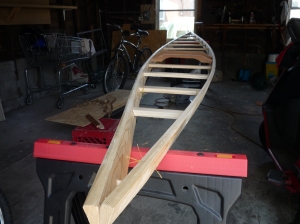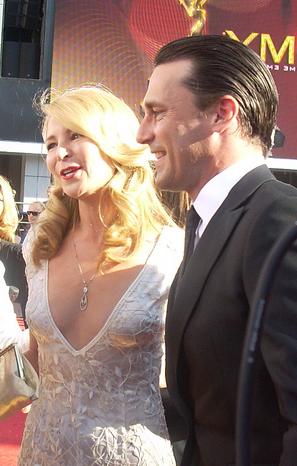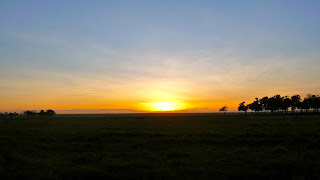Holmes had been studying for a PhD in neuroscience, and was described as socially awkward but easy-going- by no means a typical candidate for mass murder. His mental state around the time of the shooting appears to be a very different story. He purchased four firearms at a local gun shop, as well as over 6,000 rounds of ammunition... online. This last detail has a particularly strong astrological resonance with the planet Uranus. He also dyed his hair and appeared to be emulating the personality of the Joker from the Batman series.
Before exploring the connection between Uranus and Holmes' weapons purchase, let's take a look at his chart:

If you take a close look at the chart (outside ring is the chart for the shooting, inside ring is James Holmes' natal chart), you'll notice two hard aspects that may have contributed to the event. The green line shows the opposition between Saturn in Libra (in the shooting chart) and Jupiter in Aries (the natal chart). This opposition is a tug-of-war between two fundamentally different planets- the planet of expansion, freedom, and opportunity (Jupiter) and the planet of responsibility, limitation and karma (Saturn). In Holmes' birth chart, Jupiter is in Aries, the sign of pioneering action, energy and individuality. Saturn, on the other hand, is currently in Libra, the sign of cooperation and responsibility. Such an opposition demands reconciling the need for freedom and self-expression with responsibility to others. This is not a comfortable task.
More potent still, however, is the square between Mars in Libra and Pluto, which is exactly on Holmes' Neptune, both in Capricorn (the red line). Pluto, the planet of death, rebirth, and churning the depths, is penetrating the mysterious waters of Neptune. This can cause deep, difficult questions about one's ideals, beliefs, and aspirations. A challenging square from Mars in Libra, though, forces these difficult questions into the physical, interpersonal realm. Such an aspect can bring creativity and needed action, but it can also be disorienting and frustrating. This aspect may help explain the blurred line between reality and fantasy, with Holmes assuming the chaotic persona of the Joker. These aspects may also suggest why his motives in the shooting remain unclear.
One aspect of the chart for the shooting, which we've all been experiencing for a while now, is the square between Pluto in Capricorn and Uranus in Aries. In Holmes' chart, Uranus in Aries provides a third point to the square between Pluto and Mars, further electrifying the difficulty of the previous aspects. However, it also touches on an astrological narrative that spans the past 100 years or more: Uranus, Pluto, and the American history of guns and gun control.

While there is no shortage of astrological coverage of the Uranus-Pluto cycle, or Uranus charging through Aries, firearms are an important aspect of these patterns that aren't often addressed. Uranus represents individuality, freedom, and technology, including weapons technology. Aries, meanwhile, is associated with martial arts, knives, and guns. Uranus in Aries, therefore, is often a time of rapidly developing gun technology (or, perhaps even more notable, availability).
Uranus last moved into Aries in 1927. The heyday of mob and gangster violence, one of the most iconic images of the time period was the Thompson sub machine gun. The "Chicago Typewriter" represented the increasing availability of technologically sound, extremely dangerous weapons (sound familiar?) The St. Valentine's Day Massacre of 1929 brought to a head public anger over the dangerously armed gangs of the time period. Uranus was also approaching a square with Pluto, much like our current square today. When Uranus moved into more stable Taurus, the National Firearms Act was passed, in an effort to regulate "gangster weapons".
The next aspect between Uranus and Pluto occurred in the 60's. This tumultuous decade had more than its fair share of violence, including the assassination of John F. and Robert F. Kennedy, Malcolm X, and Martin Luther King Jr. Spurred in part thanks to these deaths, the Gun Control Act of 1968 was passed in Congress. With a conjunction between Uranus, Pluto, Jupiter, and Mars all around the beginning of Libra, it's as if the energies of these planets convened to produce order and cooperation in the realm of firearms.
Now in 2012, Uranus and Pluto are in square aspect again, with Uranus back in Aries. The unique aspect to this current square is the development of the Internet (see my post here about Uranus, Neptune, and the Internet). The ease with which James Holmes acquired thousands of rounds of ammunition online has alarmed many, including representatives in New York and New Jersey who are calling for greater restrictions.
Gun control is one of many issues brought to public attention with Uranus in Aries. The common denominator underlying many of these issues is the internet. Online sales, social media, and more are rapidly changing our modern society. As Uranus continues its journey through Aries and its square with Pluto, we can expect the debate over these issues to continue...
Readers: How do you feel about guns and gun control? How is the internet affecting other issues that are important to you? Leave a comment!
Uranus last moved into Aries in 1927. The heyday of mob and gangster violence, one of the most iconic images of the time period was the Thompson sub machine gun. The "Chicago Typewriter" represented the increasing availability of technologically sound, extremely dangerous weapons (sound familiar?) The St. Valentine's Day Massacre of 1929 brought to a head public anger over the dangerously armed gangs of the time period. Uranus was also approaching a square with Pluto, much like our current square today. When Uranus moved into more stable Taurus, the National Firearms Act was passed, in an effort to regulate "gangster weapons".
The next aspect between Uranus and Pluto occurred in the 60's. This tumultuous decade had more than its fair share of violence, including the assassination of John F. and Robert F. Kennedy, Malcolm X, and Martin Luther King Jr. Spurred in part thanks to these deaths, the Gun Control Act of 1968 was passed in Congress. With a conjunction between Uranus, Pluto, Jupiter, and Mars all around the beginning of Libra, it's as if the energies of these planets convened to produce order and cooperation in the realm of firearms.
Now in 2012, Uranus and Pluto are in square aspect again, with Uranus back in Aries. The unique aspect to this current square is the development of the Internet (see my post here about Uranus, Neptune, and the Internet). The ease with which James Holmes acquired thousands of rounds of ammunition online has alarmed many, including representatives in New York and New Jersey who are calling for greater restrictions.
Gun control is one of many issues brought to public attention with Uranus in Aries. The common denominator underlying many of these issues is the internet. Online sales, social media, and more are rapidly changing our modern society. As Uranus continues its journey through Aries and its square with Pluto, we can expect the debate over these issues to continue...
Readers: How do you feel about guns and gun control? How is the internet affecting other issues that are important to you? Leave a comment!










